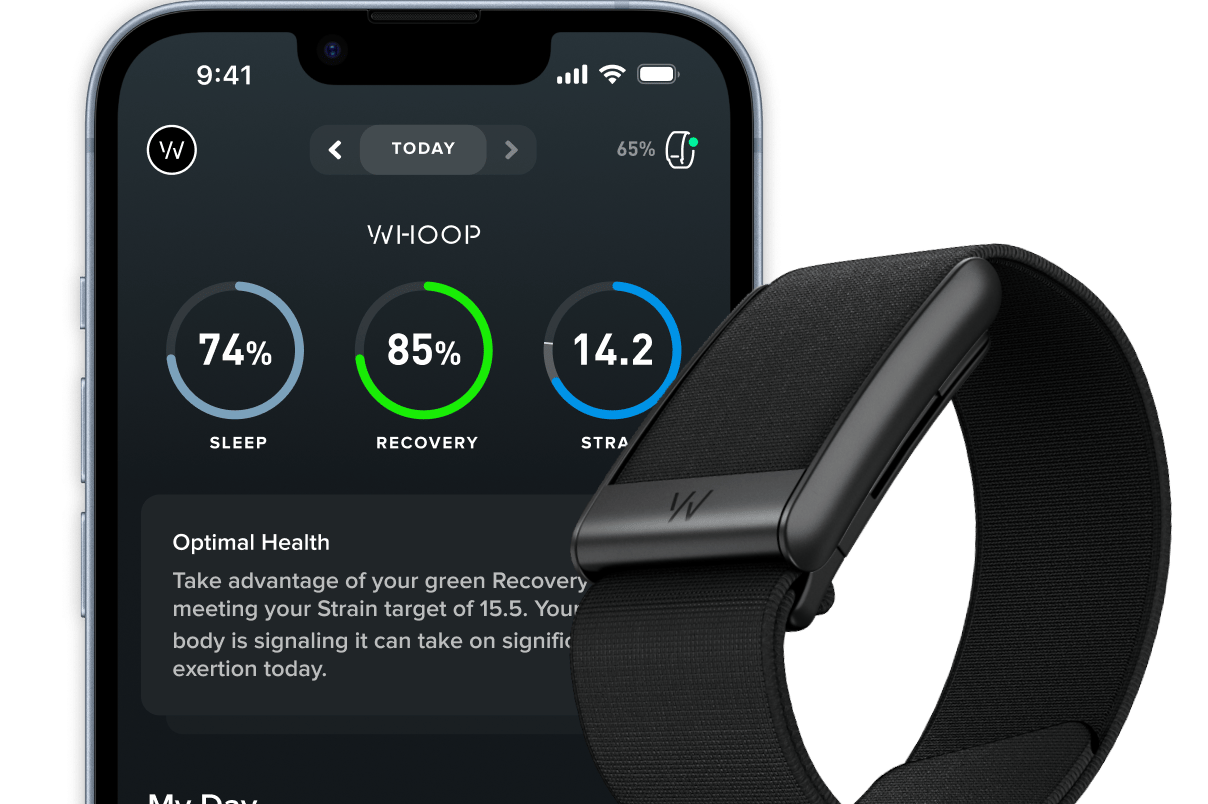Hey fitness nerds!
Thank you all {{active_subscriber_count}} of you!
As we age, our bodies naturally begin to lose muscle mass and bone density, but this decline isn't inevitable.
Recent research reveals that strength training becomes increasingly valuable as we get older, potentially reversing age-related decline and dramatically improving quality of life well into our later years.
Read 🔽 below!
🏋
IN LESS THAN 10 MINUTES WE WILL COVER:
Weekly Insights:
Strength Training as You Age – Adapting Workouts for Longevity (Part 1)
Article Explained Simple: What is Heart Rate Variability
Top 3 Stretching Exercises to Build a Morning Routine
Healthy Hash Browns Recipe
Whoop is one of the products I use every day to track my sleep, activity, stress and my heart health.
It is hands down the best health wearable, and I’ve tried Apple Watch, Garmin and Aura.

Get a free WHOOP and one month free when you join with my link: https://join.whoop.com/busybody
Strength Training as You Age – Adapting Workouts for Longevity (Part 1)

Contrary to popular belief, strength training isn't just for the young and athletic. In fact, research shows that adults who begin strength training in their 40s, 50s, 60s, and beyond often see more dramatic health improvements than younger individuals. This is particularly important since our bodies naturally lose 3-8% of muscle mass per decade after age 30, with the rate accelerating after 60.
This age-related muscle loss, known as sarcopenia, affects more than just appearance. It impacts metabolic health, bone density, balance, and overall functionality. The good news is that appropriate strength training can significantly slow or even reverse this process, regardless of your starting age or fitness level.
For adults over 40, strength training offers unique benefits beyond what younger people experience. Regular resistance exercise has been shown to increase bone mineral density, a crucial factor in preventing osteoporosis and fractures that become more common with age. A study in the Journal of Bone and Mineral Research found that adults who strength trained twice weekly for a year increased bone density by 1-3%, while non-exercisers lost bone mass during the same period.
Hormonal changes that occur with aging also impact how we should approach strength training. After 40, natural decreases in testosterone, growth hormone, and estrogen affect muscle growth and recovery. This doesn't mean you can't build strength – it simply means your approach needs adjustment.
The primary principles of effective strength training remain consistent across age groups: progressive overload, proper form, and adequate recovery. However, as you age, the implementation of these principles should evolve to account for joint health, recovery capacity, and injury prevention.
When beginning or adapting a strength training program after 40, prioritize exercises that provide the most functional benefit. Compound movements like squats, deadlifts, rows, and presses engage multiple muscle groups simultaneously, delivering more efficient results than isolation exercises. These movements also mimic real-life activities, supporting everyday functionality.
However, modifications are often necessary. For example, a traditional barbell back squat might be replaced with a goblet squat, which places less stress on the lower back while still effectively targeting the lower body. Similarly, a conventional deadlift might be swapped for a trap bar deadlift, which allows for a more upright posture and reduced strain on the lower back.
Proper warm-up becomes increasingly crucial with age. While younger exercisers might get away with minimal preparation, older adults benefit significantly from a comprehensive warm-up that increases core temperature, enhances joint mobility, and activates key muscle groups. A good rule of thumb is to spend at least 10-15 minutes warming up before your main workout.
This might include:
5 minutes of light cardio (walking, cycling, rowing)
Dynamic mobility work for major joints (shoulder circles, hip rotations)
Specific activation exercises for the muscles you'll be training
Recovery needs also change with age. While a 25-year-old might recover adequately from intense strength training within 24-48 hours, older adults often need 48-72 hours for full recovery. This doesn't mean training less frequently – it means organizing your program to allow adequate recovery for each muscle group.
A well-designed program might include 2-3 full-body workouts per week with at least one day of rest between sessions. Alternatively, a split routine could work different muscle groups on consecutive days, allowing each group sufficient recovery time. The key is consistency without overtraining.
Proper nutrition becomes even more critical for strength training as you age. Protein requirements actually increase in older adults, with research suggesting 1.2-1.6 grams per kilogram of body weight daily for those engaged in regular strength training. This is higher than the 0.8g/kg typically recommended for younger adults and helps combat age-related muscle loss.
Timing of protein intake also matters. Studies show that older adults benefit from evenly distributed protein intake throughout the day, with 25-30g per meal being optimal for muscle protein synthesis. This contrasts with younger adults who can often effectively build muscle with more concentrated protein intake.
Joint health deserves special attention in age-adapted strength training. While some joint discomfort is normal during the aging process, proper exercise selection and technique can actually improve joint function rather than worsen it. Focus on full ranges of motion with appropriate loads, and don't hesitate to modify exercises that cause pain beyond mild discomfort.
For those with existing joint issues, equipment modifications can make a significant difference. Dumbbells often allow for more natural movement patterns than barbells. Resistance bands provide consistent tension with less joint stress. And machines can offer supported movement patterns for those still building confidence with free weights.
The intensity of training should be challenging but sustainable. While younger exercisers might benefit from occasional maximum effort lifts, older adults typically see better results with moderate loads (60-80% of one-rep maximum) for 8-15 repetitions. This provides sufficient stimulus for strength and muscle development while minimizing injury risk.
That said, don't be afraid to push yourself appropriately. One common mistake is underestimating what older bodies are capable of. Research consistently shows that even individuals in their 80s and 90s can make substantial strength gains with proper training. The key is progressive overload – gradually increasing the demands on your muscles over time.
Consistency trumps intensity when it comes to long-term results. A sustainable program that you can maintain for years will produce far better outcomes than an extreme program that leads to burnout or injury. This is especially true as we age and recovery capacity diminishes.
Another consideration is training specifically for balance and coordination, which naturally decline with age. Incorporating unilateral exercises (single-leg or single-arm movements) and unstable surface training (with appropriate precautions) can significantly improve these aspects of fitness, reducing fall risk and enhancing overall functionality.
Remember that it's never too late to start.
Studies have documented remarkable improvements in individuals who began strength training in their 70s, 80s, and even 90s. These improvements extend beyond muscle strength to include better mobility, enhanced cognitive function, improved mood, and greater independence in daily activities.
In Part 2 of this series, we'll explore specific program designs, exercise selection, and progression strategies to help you implement these principles effectively.
We'll also discuss how to adjust your approach as you move through different decades of life, ensuring your training evolves with your changing needs.

Fitness and health enthusiasts - We have a lot of things in store for you!
Check out busybody.io - and join the waitlist for our brand-new AI health app.
Article of the Week
Article Explained Simple: What is Heart Rate Variability
Heart Rate Variability (HRV) measures the variation in time between consecutive heartbeats, providing valuable insights into your autonomic nervous system's health and function.
While we often think of a healthy heart as having a steady, metronome-like beat, research shows that greater variability between heartbeats actually indicates better cardiovascular health and overall resilience.
HRV is controlled by your autonomic nervous system, which has two branches: the sympathetic ("fight-or-flight") and parasympathetic ("rest-and-digest") systems, with higher HRV indicating a good balance between these systems and lower HRV suggesting stress or poor recovery.
Many factors affect your HRV, including age, fitness level, stress, sleep quality, hydration, nutrition, and even breathing patterns, with physically fit people typically having higher HRV than sedentary individuals.
Modern fitness trackers and smartwatches can now measure HRV, allowing you to track changes over time and adjust your training, recovery, and lifestyle habits accordingly.
For athletes and fitness enthusiasts, monitoring morning HRV can help determine whether to push hard in training or focus on recovery that day, as a significantly lower-than-normal HRV suggests your body hasn't fully recovered from previous stress.
Fascinating Fact:
Your HRV naturally fluctuates throughout the day, but the most reliable measurement is taken first thing in the morning before you get out of bed. This reading, called your "morning readiness" HRV, provides the clearest picture of your recovery status and autonomic balance because it's least affected by daily activities and stressors.
We have also started a referral program where you can earn prizes for referring your friends to this newsletter.
What other topics do you want me to write about?
Top 3 Stretching Exercises to Build a Morning Routine
These simple stretches take just minutes but can dramatically improve your mobility and energy levels when performed consistently each morning:

Child's pose with lateral reaches
Start on hands and knees, then sit back on your heels with arms extended forward.
Breathe deeply for 30 seconds, feeling the stretch along your spine and between your shoulder blades.
Next, walk your hands to the right while keeping your hips back, holding for 15-30 seconds to stretch the left side of your body.
Return to center and repeat on the left side to create balance.
This gentle stretch releases tension in your back, shoulders, and hips that builds up during sleep, while the side reaches specifically target your intercostal muscles and lateral fascia.
Standing quad and hip flexor stretch
Stand next to a wall or chair for support, and grasp your right ankle with your right hand, bringing your heel toward your buttock.
Keep your knees close together and stand tall with your core engaged.
Gently push your hips forward to deepen the stretch, holding for 30 seconds before switching sides.
For a deeper hip flexor stretch, step the opposite foot forward into a split stance while maintaining the ankle hold.
This stretch is crucial for counteracting the hip flexor tightness that develops from sitting, improving posture, and preparing your lower body for daily movement.
Thoracic extension over foam roller
Place a foam roller perpendicular to your spine and lie back so it's positioned under your mid-back (not lower back).
Support your head with your hands and keep your knees bent with feet flat on the floor.
Gently extend backward over the roller, opening your chest and feeling a stretch in your thoracic spine.
Hold for 10-15 seconds, then move the roller slightly higher or lower and repeat for a total of 1-2 minutes.
This exercise counteracts the forward-hunched position many people adopt during sleep and while using devices, improving breathing capacity, shoulder function, and overall posture.
Healthy Hash Browns Recipe (makes 4 servings)
These crispy-on-the-outside, tender-on-the-inside hash browns deliver all the satisfaction of the diner classic with significantly less oil and better nutrition.
This recipe was created in 2 minutes with the BusyBody App. Click the button for free access to the app.

Macros per serving
Total Calories: 180 kcal
Protein: 5 g
Carbohydrates: 30 g
Sugars: 2 g
Fat: 5 g
The Ingredients
4 medium russet potatoes (about 800g)
1 medium onion, finely diced
1 bell pepper, finely diced (optional)
2 tablespoons olive oil or avocado oil
1/2 teaspoon garlic powder
1/2 teaspoon onion powder
1/4 teaspoon paprika
Salt and pepper to taste
2 tablespoons fresh parsley, chopped (optional)
Instructions
Wash the potatoes thoroughly and pat them dry. You can either peel them or leave the skin on for extra fiber and nutrients.
Grate the potatoes using the large holes of a box grater or a food processor with a grating attachment.
Place the grated potatoes in a clean kitchen towel and squeeze out as much moisture as possible. This is the key step for crispy hash browns.
In a large bowl, combine the dried grated potatoes, diced onion, and bell pepper (if using).
Add the garlic powder, onion powder, paprika, salt, and pepper. Mix well to distribute the seasonings evenly.
Heat 1 tablespoon of oil in a large non-stick skillet over medium-high heat.
Add half the potato mixture to the skillet and press down with a spatula to form an even layer about 1/2 inch thick.
Cook for 4-5 minutes until the bottom is golden brown and crispy.
Carefully flip the hash browns (you can flip in sections if needed) and cook for another 4-5 minutes until the other side is crispy.
Transfer to a plate lined with paper towels to absorb any excess oil.
Repeat with the remaining oil and potato mixture for the second batch.
Garnish with fresh parsley if desired and serve hot.
Make your dream of working online a reality and start a newsletter - join beehiiv for free and don’t pay any renewal fees until you grow your subscriber base >2500 subscribers.
I’ve personally tried plenty of other platforms, and Beehiiv is hands down the best and easiest to use.

